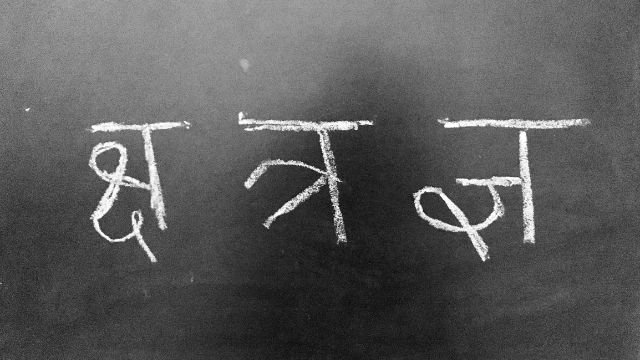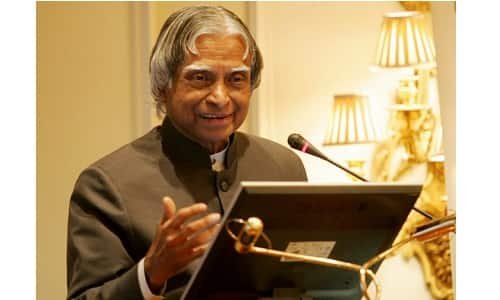Languages are the core of cultural diversity, and in a country like India with a diverse linguistic population, they are crucial in determining the identity of the country. India still has several different languages, each with their own culture, history, and significance in 2023. Let us examine the top 10 languages in India by number of speakers in this article and examine the factors that contribute to their prominence. Also know about the most spoken language in the world.
List of Most Spoken Languages in India
| Rank | Language | Number of Speakers (in millions) |
| 1 | Hindi | 550 |
| 2 | Bengali | 98 |
| 3 | Telugu | 94 |
| 4 | Marathi | 83 |
| 5 | Tamil | 77 |
| 6 | Urdu | 70 |
| 7 | Gujarati | 65 |
| 8 | Kannada | 59 |
| 9 | Odiya | 45 |
| 10 | Malayalam | 38 |
1. Hindi (550 million speakers)
With more than 550 million speakers, Hindi is India’s most used language and is essential to bringing this huge and diverse country together. The historical roots of its domination can be seen in the antiquity of the Sanskrit language. Hindi can connect people from different geographical areas and generational divides thanks to this linguistic relationship, making it available to a sizeable section of the population.
Beyond its practical use as a language, Hindi is integral to India’s cultural identity. Hindi is closely associated with Bollywood, the renowned Indian film industry that launched the language onto the world arena. Further enhancing its status as the language of the country, Hindi now acts as the administrative language of the Indian government.
2. Bengali (98 million speakers)
Bengali, which is primarily spoken in West Bengal, is ranked second because of its extensive literary and cultural history. It is a rich source of art, music, and literature; it is greater than just a language. Bengali continues to have a significant influence on international affairs, as evidenced by the writings of Nobel Prize–winning author Rabindranath Tagore. Bengali’s dominance has been maintained thanks to this linguistic history, which gives its speakers great pride.
3. Telugu (94 million speakers)
Telugu, which has 94 million native speakers and is most popular in the southern states of Andhra Pradesh and Telangana, is the third most widely spoken language in India. Its significance is anchored in its historical relevance and rich cultural history, which go far beyond its numerical significance.
Telugu has a long history that may be traced back to the early Chola and Satavahana empires. It is famed for its classical literature and ancient scripts. The language is valued for poetry and classical music because of its exceptional capacity to communicate nuanced emotions.
Telugu is still widely used nowadays in India and continues to grow in popularity. Tollywood, or the Telugu film industry, competes with Bollywood for popularity and impact by churning out an astounding number of films each year. In addition, the grace and storytelling skills of Telugu’s classical dance styles like Kuchipudi are recognized.
4. Marathi (83 million speakers)
More than merely a language, Marathi, which is spoken by 83 million people worldwide but primarily in Maharashtra, is a cultural symbol of the state’s identity. Its significance reflects its rich past, which was characterized by the splendour of the Maratha Empire and the pious writings of individuals like Sant Tukaram and Sant Dnyaneshwar.
The literary heritage of Marathi is strong and varied, including well-known works in many genres. The Maharashtrian Sant Sahitya and Bhakti movements have made significant contributions to Marathi literature. The language is still used as a medium in contemporary fiction, drama, and film.
Marathi’s importance is further highlighted by Maharashtra’s thriving cultural scene. Marathi culture survives through its language, enhancing the lives of its speakers and encompassing everything from the throbbing rhythms of Lavani dance to the classic Warli painting.
5. Tamil (77 million speakers)
Tamil is not only a language; it is an embodiment of a rich cultural and literary history that dates back thousands of years. Tamil is spoken by 77 million people, mostly in Tamil Nadu and some areas of Sri Lanka. The Sangam era, during which ancient Tamil literature prospered, is where its enduring value can be found.
The Carnatic music genre has its roots in Tamil, which is renowned for its classical music. The complexity of the language’s poetry is shown in the ancient Tamil Sangam poetry, a priceless treasure. The distinctive temple architecture of Tamil Nadu plus the Bharatanatyam dance style highlights the language’s cultural importance.
In addition, Tamil film, often known as Kollywood, has a large international fan base because of its distinctive storytelling and creative originality. The language’s unusual script, which combines the Grantha and Tamil scripts, enhances its cultural appeal.
6. Urdu (70 million speakers)
Urdu is praised for its lyrical beauty and cultural significance and has 70 million speakers, most of whom live in areas like Uttar Pradesh and Bihar. It goes beyond merely being a language; it is an art form in and of itself, deeply ingrained in the history and identity of the area.
With giants like Mirza Ghalib and Allama Iqbal, Urdu poetry has had a lasting impression on Indian literature. The expressive power and poetic nature of the language have made it a vehicle for profound literary and philosophical investigation. In addition, it has served as a unifying factor among various cultures, promoting cultural peace.
Furthermore, the impact of Urdu on music, especially the ghazal genre, cannot be emphasized. It makes a major contribution to India’s diverse repertoire of classical and folk music. The tradition of the Urdu language is further enriched by the elaborate and creative calligraphy that characterizes this language.
7. Gujarati (65 million speakers)
Gujarati is a language that is spoken by 65 million people, primarily in the dynamic state of Gujarat, and which thrives where business, culture, and innovation meet. However, it extends well beyond economics. Its dominance is firmly entrenched in Gujarat’s historical importance as a commercial hub.
Gujarati’s distinctive alphabet, which is a variation of the Devanagari script, is beautiful to look at and gives the language an aesthetic element. Gujarat’s rich cultural diversity is enhanced by the flowing curves and complicated characters of the script.
Poetry, prose, and theatre are all part of Gujarati’s rich literary heritage. In Gujarati literature, the works of eminent poets such as Narsinh Mehta and Mirabai have a special place. It is a language that reflects the people’s philosophical and spiritual ideals and is in tune with their ethos.
8. Kannada (59 million speakers)
Karnataka’s official language is Kannada, which has 59 million native speakers and is intricately woven into the fabric of the state’s rich cultural and historical heritage. The origins of Kannada literature from more than a thousand years ago can be seen in the language’s enduring legacy. The “Kavirajamarga,” a literary treatise from the ninth century, offers insights into this language’s historic beginnings and is one of the oldest literary traditions in all of India.
In addition to its historical significance, Kannada is crucial to modern Karnataka and acts as a unifying factor in this heterogeneous state. It flourishes in the theatre, arts, film, and literature, making a substantial contribution to India’s cultural landscape. A testament to this is the distinctive and physically appealing Kannada script.
9. Odia (45 million speakers)
Odia is a language steeped in history and custom that is mostly spoken in the coastal state of Odisha. It is cherished by its 45 million speakers as a crucial component of their cultural identity. Due to its connection to Odisha’s lengthy history, which includes numerous historical kingdoms and dynasties, Odia has managed to maintain its significance.
The vibrant artistic and literary past of the state is embodied in the spoken language of Odia. Poetry, music, dance, and classical literature have a long history there. The preservation of the Odia script, a distinctive and lovely script, which is an essential component of this cultural mosaic, remains to be a source of pride for Odias.
10. Malayalam (38 million speakers)
The language of Kerala, Malayalam, has a distinctive script and rich literary history that give it a special place in India’s linguistic landscape. It keeps its status as a cultural heritage with 38 million speakers. The written form of Malayalam, which was adapted from ancient Brahmi scripts, is visually appealing and highlights the distinctiveness of the language.
The literary tradition of Malayalam is renowned, with classic works written as far back as the Middle Ages. Malayalam culture is the source of several cultural forms practiced in the state, including the classical dance Mohiniyattam and the conventional dance-drama Kathakali. The popularity of Malayalam on the international scene has also been increased by the success of its film.
Conclusion
India’s rich cultural legacy is reflected in the variety of its languages. For a variety of historical, cultural, and geographic causes, these top 10 languages have flourished and kept their pre-eminence. They provide a sense of togetherness in variety by representing not only languages but additionally the histories, identities, and traditions of millions of individuals all around the nation. The necessity of conserving and appreciating India’s rich linguistic diversity is highlighted by the continuous relevance of these languages.

Rahul Kumar is a passionate educator, writer, and subject matter expert in the field of education and professional development. As an author on CoursesXpert, Rahul Kumar’s articles cover a wide range of topics, from various courses, educational and career guidance.




